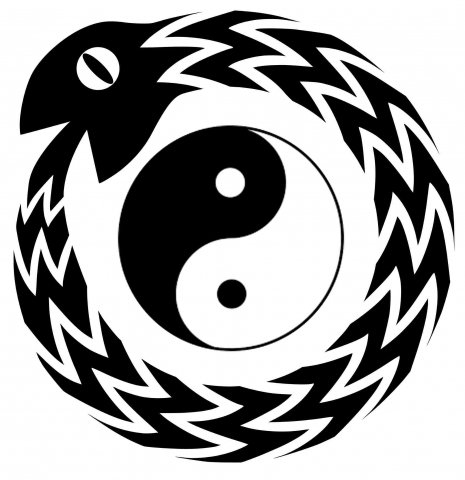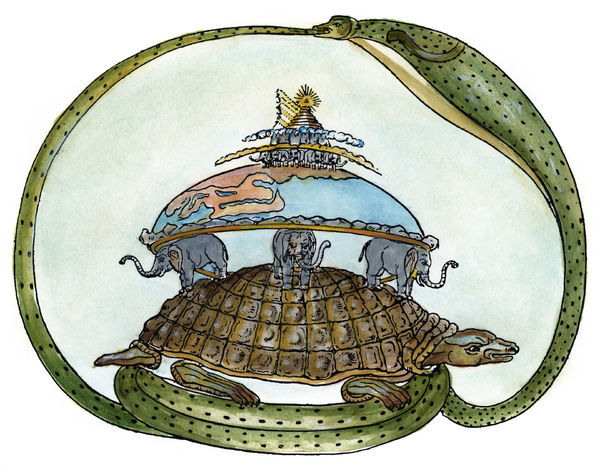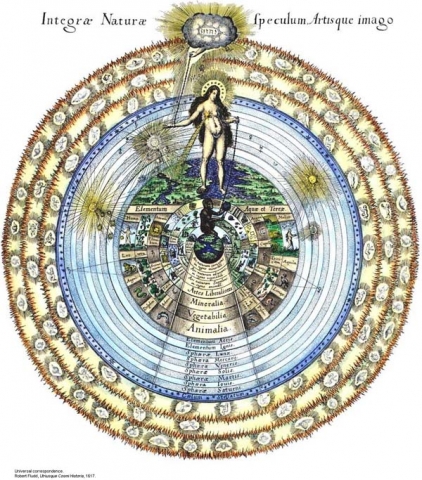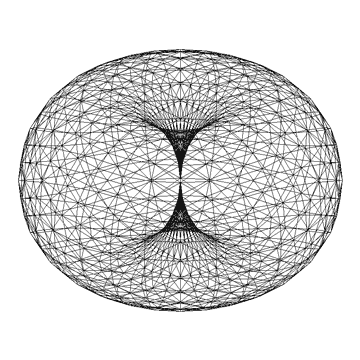In this article we will discuss a different unique form of a mandala – the ouroboros.
The Ouroboros is a symbolic representation of coming full circle.
![]()
Ouroboros Symbolism
This image appears on every continent representing eternity – not as in ‘all time’, but as in timelessness – the idea of primordial unity existing before any beginning.
The ouroboros is a circular symbol created by a creature (snake, dragon, DNA…etc.) feeding off its own tail.

Lukas Jenis (1590-1630), engraving from alchemical emblem-book De Lapide Philisophico, 1625
It represents infinity; completion; uniting of polarities; regeneration; reincarnation; eternity; immortality of the soul; cosmic soul, and the source of all creation.
In the esoteric stream of knowledge it is taught there are spiraling octaves of consciousness. That is, the evolution of consciousness moves in ever ascending spirals.

This process mirrors the spiraling flow of energy up the chakras. These are:
- red (survival, security)
- orange (awareness, growth, movement, creativity)
- yellow (self-awareness, will power, courage)
- green (compassion, understanding, unconditional love)
- blue (wisdom, communication, co-creation)
- indigo (compassion blended with wisdom, unity)
- violet (gateway to infinity)
These also represent the levels of consciousness of:
- red (mineral)
- orange (plant/animal)
- yellow (human)
- green (planetary)
- blue (galactic)
- indigo (galactic cluster)
- violet (universal)

The ouroboros reminds us to remember the full process of our beingness and to not get caught up in seeing life as only one turn on the spiral. We are reminded to broaden our perspectives and attempt to understand the full implications of the eternal nature of our souls and to understand why people are the way they are in the grand scheme of things.
The point is to not get caught up in worldly goals to the exclusion of spiritual goals. It is important to create a nice life for yourself full of abundance and prosperity, to work hard and enjoy the fruits of physical existence, but always keep in mind the higher goal – that of learning truth, evolving your consciousness and transforming your Soul for the greatest good and helping those around you do the same.
This is one of the important messages of the ouroboros.
The serpent is being created through its own destruction.
This represents the perpetual cyclic renewal of life and infinity; the cycle of life, death and rebirth, such as the Phoenix does.

“In order to rise from its own ashes, the Phoenix first must burn.” ~ Octavia Butler
The ouroboros can also represent the double helix structure of DNA.
In the esoteric stream of knowledge it is taught that our DNA transforms unlocking previously inaccessible areas that have been stored as we move through different levels of consciousness. This transformation activates more of our latent human potential. Therefore, our DNA structure is highly intertwined with the evolution of our consciousness, and the ouroboros reflects that by symbolizing the spiraling turns of DNA and the spiraling evolution of consciousness.

“In some representations the serpent is shown as half light and half dark, echoing symbols such as the Yin Yang, which illustrates the dual nature of all things, but more importantly, that these opposites are not in conflict.”1

Serpent Symbolism
Serpents in general symbolize fertility, rebirth, resurrection and creative life force.
As snakes shed their skin through sloughing, they are symbols of rebirth. It sheds its skin as it outgrows the old.
Before the snake begins to shed, its eyes begin to cloud over giving it a trance-like appearance. As the skin begins to shed, the eyes begin to clear as if they will see the world anew.

Serpents can also represent healing, transformation, life changes, and personal growth.
Freddy Silva writes in Secrets in the Fields, “The serpent [also] represents the creative Universal energy, and for this reason the Aztec, Mayan/Toltec god Quetzalcoatl is depicted as such (Coatl represents energy moving in waves or spirals, a precursor to the electromagnetic wave of science); the coiled serpent is also known as kundalini, the life force that rises from the base of the spine, stimulating the chakra system, as it spirals toward the crown chakra in the top of the head…However the coils of the serpent are also symbolic of positive and negative polarities, the force of disorganization and transformation.”
“The serpent and snake has long been a symbol of the sexual/creative life force within humans as is taught in Eastern traditions. The kundalini or serpent fire lies coiled at the base of the spine. As we grow and develop, the primal energy is released, rising up the spine. This in turn activates energy centers in the body and the mind, opening new dimensions and levels of awareness, health, and creativity.”2

The snake (or dragon) can act as a gatekeeper, guarding the path until the student is serious about undertaking the challenging yet rewarding journey of transformation. Upon growth and transformation the snake is tamed and thus used to transcend to higher and higher heights for the greatest good of all.


The Ouroboros
The ouroboros is believed by some to be inspired by the Milky Way just as the Hunab Ku is. It is “a serpent of light residing in the heavens” with the mouth of the Ouroboros at the Galactic center.

The snake is known to symbolize the Kundalini energy in India.
“The divine power, Kundalini, shines like the stem of a young lotus; like a snake, coiled round upon herself she holds her tail in her mouth and lies resting half asleep at the base of the body.” 2nd century Yoga Kundalini Upanishad
or: Kundalini equates to the serpents of the Caduceus – the entwined serpents representing DNA or the spiraling kundalini energy as it rises, activating each chakra to reach the 3rd eye – or the gateway to infinity.
Gyorgy Doczi writes, “Hermes or Mercury, messenger of the Greek and Roman gods, had two snakes winding around his magic wand, the caduceus, tool of his healing power, and even today professions connected with healing use this dinergic symbol as their emblem. Hermes was also the guide of the departed to the afterworld, and the intertwined spiraling snakes of his magic wand may also symbolize the intertwined mystery of life and death.”

The Caduceus itself is another well-known symbol found throughout the world.
Here is the oldest known symbol of the intertwined snakes from the ancient Sumerian “libation vase of Gudea” with the dragon Mushussu, dedicated to Ningishzida; 21st century BCE:

The Caduceus is not to be confused with the Rod of Asclepius which features only one snake. This symbol originates in ancient Greek myth and the Greek god Asclepius, a deity associated with healing and medicine.

The Caduceus as a Symbol of the Unconscious Mind
Carl Jung writes, “The ouroboros is a dramatic symbol for the integration and assimilation of the opposite, i.e. of the shadow. This ‘feed-back’ process is at the same time a symbol of immortality, since it is said of the ouroboros that he slays himself and brings himself to life, fertilizes himself and gives birth to himself. He symbolizes the One, who proceeds from the clash of opposites, and he therefore constitutes the secret of the prima materia which […] unquestionably stems from man’s unconscious’.”3

History of the Ouroboros
The ouroboros symbol is found in the study of: sacred geometry, alchemy, Egypt, Greece, the Middle East, India, China, Japan, Mesoamerica, South America, Native America, Norse mythology, Christianity, Rome, Haiti, West Africa, Freemasonry, Theosophical Society, the Tarot, Carl Jung, and crop circles.
It is traced as far back as 1600 BC to the Egyptian Book of the Netherworld depicted on the second gilded shrine of Tutankhamun. It passed then to Phoenicia and later to the Greek philosophers. The Greeks gave it the name Ouroboros for “the tail-devourer”.
The Egyptian Book of the Dead says, “the self-begetting sun god Atum is said to have ascended from chaos-waters with the appearance of a snake, the animal renewing itself every morning, and the deceased wishes to turn into the shape of the snake Sato (‘son of the earth’), the embodiment of Atum.”
Here it is depicted on the second gilded shrine of Tutankhamun.

Here are closeups of the above image:
The ouroboros can clearly be seen circling around the head and shoulders and the lower legs of the human being.


It is also found in many other places including:
- ouroboros from the papyrus of Dama – 21st century dynasty, Egypt, 11th century BC

- greco-egyptian ouroborus – from Chrysopoeia of Cleopatra encloses the words “hen to pan” meaning: “One is the All”. This image seen below is one of the oldest images of the Ouroboros to be linked with the legendary opus of the Alchemists, the Philosopher’s Stone.

Its black and white halves represent the Gnostic duality of existence.
“Since Chinese alchemy did reach Alexandria, probably the symbol Yin-Yang as dual-natured, responsible for creation, was transformed into a symbol called Ouroboros. It is a snake and as such is a symbol of soul. Its head and anterior portion is red, being the color of blood as soul; its tail and posterior half is dark, representing body. Ouroboros here is depicted white and black, as soul and body, the two as “one which is all.” It is cosmic soul, the source of all creation. ”4

It is also found in the following places:
- Quetzalcoatl, the serpent god, is sometimes portrayed biting his tail on Aztec and Toltec ruins.
- A looping Quetzalcoatl is carved into the base of the Pyramid of the Feathered Serpent at Xochicalco, Mexico, 700-900 AD.

- This relates to the Orphic Egg in ancient Greek tradition. The egg represents creation, around which is wound the World Serpent. This is also a alchemical image of the dominance of time over life on Earth. The snake is also a common symbol of the volatility of time.

- Plato described a “self-eating circular being as the first living thing in the universe”.

- In Gnosticism the serpent symbolized eternity and the soul of the world. Pictured below is an ancient Egyptian Gnostic Ouroborus with Scarab.

- Norse Mythology – the serpent Jormungand, one of 3 children of Loki, who grew so large it could encircle the world and grasp its tail in its teeth

- Hindu Mythology – the dragon circling the tortoise which supports the four elephants that carry the world

- Mithraic mystery cults – Mithra was shown wrapped with an ouroboros indicating his eternal and cyclic nature and the cyclic nature of karma. The image below is Mithras and the egg, from Housesteads, Hadrian’s Wall.

- Japanese woodcut: Yellow denotes the areas damaged by earthquake in Kaei 7 (4 November 1854), blue the coasts inundated by the tidal wave of that year, and red the areas devastated by the earthquake of Ansei 2 (2 October 1855).

- Eliphas Levi’s great symbol of Solomon – from his book Transcendental Magic.

- Theodoros Pelecano of Corfu’s Ouroboros – from the Synosius, 1478

-
French Ouroborus from Chants royaux en l’honneur de la Vierge au Puy d’Amiens, Royal songs in honor of the Virgin at Puy d’Amiens, 1501-1600

- Alchemist Compendium Pandora explicata from 1706 by Johann Michael Faust featuring the double ouroboros

- Hermetic Elixir of Life as an dragon shaped like an infinity symbol eating its own tail

- Ouroboros symbol from Theosophy

- Clavis Artis alchemy manuscript created in Germany in the late seventeenth or early eighteenth century, attributed to the Persian Zoroaster (Zarathustra)

- double Ouroboros by Abraham Eleazar – from Uraltes Chymisches Werch of The Book of Abraham the Jew, mid-1700’s

- Cosmology of Robert Fludd – the Soul of the World; Spiral cosmology – intermediary steps between matter and spirit.

- A crop circle from 2001 near Liddington Castle in Wiltshire, England

Credit: Peter Sorensen
It is also interesting to note that the German chemist August Kekule (1829-1896) dreamed of a snake with its tail in its mouth while taking a nap. He had been researching the molecular structure of benzene. After waking, he interpreted the dream to mean the structure was a closed carbon ring.
Below is an image of the benzene ring within an ouroboros.

Ouroboros and Cycles
The ouroboros’s symbolic connotation “owes to the returning cyclical nature of the seasons; the oscillations of the night sky; self-fecundation; disintegration and re-integration; truth and cognition complete; the Androgyny; the primeval waters; the potential before the spark of creation; the undifferentiated; the Totality; primordial unity; self-sufficiency, and the idea of the beginning and the end as being a continuous unending principle.”5
It represents the conflict of life and the realization that renewed life comes out of the process of life and death.
“My end is my beginning. In a sense life feeds off itself, thus there are good and bad connotations which can be drawn. It is a single image with the entire actions of a life cycle – it begets, weds, impregnates, and slays itself, but in a cyclical sense, rather than linear.”6

This speaks to the cycle of reincarnation and the greater cycles of reincarnation indicating the evolution of the soul.
“It fashions our lives to a totality more towards what it may really be – a series of movements which repeat. ‘As Above, So Below’ – we are born from nature, and we mirror it, because it is what man wholly is a part of. It is this symbolic rendition of the eternal principles that are presented in the Emerald Tablets of Thoth.”7
“The alchemists, who in their own way knew more about the nature of the individuation process than we moderns do, expressed this paradox through the symbol of the ouroboros, the snake that eats its own tail. In the age-old image of the ouroboros lies the thought of devouring oneself and turning oneself into a circulatory process, for it was clear to the more astute alchemists that the prima materia of the art was man himself.”8

The Ouroboros and the Tube Torus
Notice how the ouroboros can resemble a tube torus. Below is a tube torus circling within itself.

This tube torus can easily be likened to the ouroboros chasing its own tail to eternity.
We go into great detail about the importance of the torus in other articles. See Articles 100-110 for more information.
The torus is an incredibly important shape that represents the basic process of life and matter at the core of reality. Everything in reality oscillates at its smallest scales, back and forth between time/space and space/time. This oscillation creates interference patterns of waves which in turn creates standing waves of geometry that matter precipitates upon. The geometry is an invisible vessel – the blueprint upon which matter forms. This process is what creates the physical from the metaphysical – or matter from consciousness.

- Gyurme, Tenzin, The Flower of Life and the History of Meta-Physics, House of Goddess – Ireland, 2007
- Andrews, Ted, Animal Speak: the Spiritual & Magical Powers of Creatures Great & Small, Llewellyn Publications, 2002
- Jung, Carl, Mysterium Coninunctionis, Collected Works, Vol. 14, Princeton University Press, 2nd edition 1977
- Mahdihassan, S, Comparing Yin-Tang, the Chinese symbol of creation, with Ouroboros of Greek alchemy, American Journal of Chinese Medicine, 17(3-4), 1989, https://www.ncbi.nlm.nih.gov/pubmed/2633627
- Gyurme, Tenzin, The Flower of Life and the History of Meta-Physics, House of Goddess – Ireland, 2007
- ibid.
- ibid.
- ibid.
Recent Comments